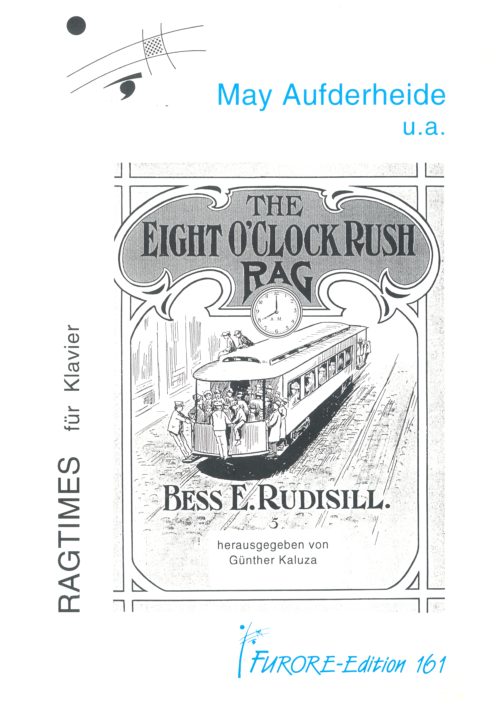Irene M. Giblin was raised in Missouri, living much of her life in St. Louis. Having been a good piano student showing a natural talent for the instrument in her adolescence, Irene was first employed as a music demonstrator by Charles Daniels (a.k.a. Neil Moret) at the Grand Leader department store in St. Louis at the tender but eager age of 14. She was hired to play all of the latest hits from the Jerome Remick catalog, and her sister Gertie was part of the deal, further encouraging people to buy Remick wares. She was later moved to the Stix, Baer & Fuller department store, also in St. Louis, when she was right out of high school at the age of 17. Giblin ended up working five years, missing only a week of work during that entire period.
In her positions, playing the piano several hours every day for anyone who wanted to listen to the latest Remick wonders, it was natural for someone of Irene’s creativity to also write some of her own works. Over a period of six years Giblin published nine rags, most of them with Remick. As was so often the story, Giblin eventually gave up her composing and performing endeavors, at least professionally, after she married and had her first of two children. Even though she devoted much of the rest of her life to raising a family, Ms. Giblin never stopped her desire for playing the piano. Although she spent much of the Great Depression through World War II without an instrument, her husband procured a Baldwin baby grand for her which she treasured through the rest of her life. Mr. O’Brien passed away in early 1958, just short of their 50th anniversary.
As an indication of how hard it was for a woman to have a rag even considered by a publisher in this predominantly male city known for its ragtime, not one of Giblin’s pieces was actually published in St. Louis, even though she was its most prolific female composer at that time. This was in part because of her job working with Remick, but it seems that bulk of women composers were published in Kansas City, Chicago or New York. But her music was most certainly heard in St. Louis, as Chicken Chowder was particularly popular with ragtime orchestras.
The edition:
AUFDERHEIDE, MAY(1888-1972) u. a.
Ragtimes
fue 1610 ISMN: M-50012-061-2
Aufderheide, May: Dusty & The Thriller!; Giles, Imogene: Red Peppers; Bolen, Grace M.: The Smoky Topaz; Ruddisill, Bess: The Eight O’ Clock Rush; Niebergall, Julia Lee: Horseshoe Rag; Giblin, Irene M.: Chicken Chowder; Cozad, Irene: Eatin Time (Kaluza)
American women pianists composed numerous ragtime pieces around the turn of the century about three hundred of which have been found and listed in recent years. Eight such pieces are published here; these syncopate rhythms are still as appealing as ever. Those who do not feel like continually practicing wide jumps with their left hand and octaves with their right should look for a partner and play these pieces four hands.


